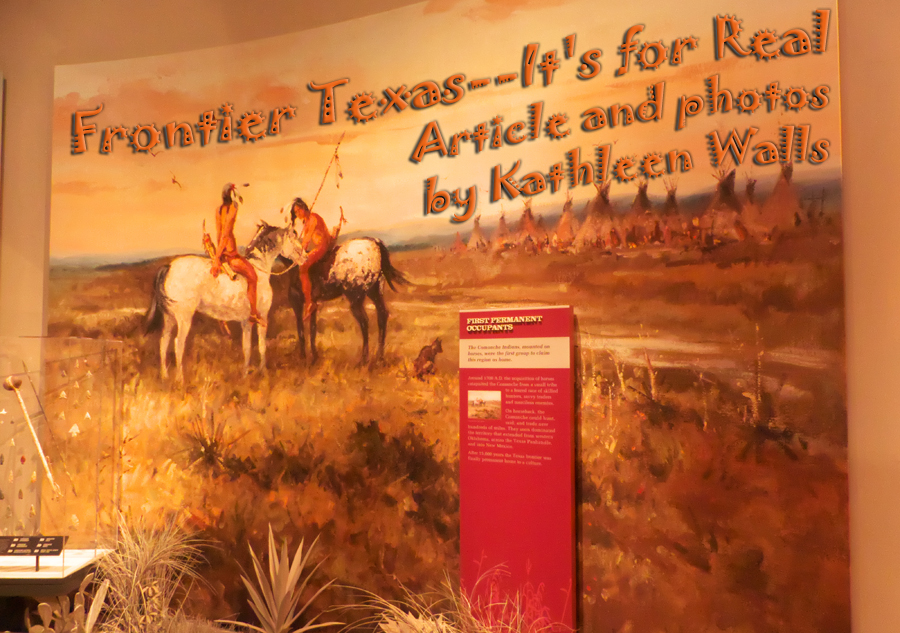
Some museums pack a punch. You walk away
feeling "been there, done that" in real time. Frontier Texas is one
of those. You feel as if you are listening to real people talking
just to you when you experience an encounter with one of Frontier
Texas's nine spirit guides. Spirit guides are not supernatural
phenomena although they create an almost perfect likeness of a
living, breathing person. They are three-dimensional hologram images
of several Native Americans, a former slave, a frontier
soldier, a buffalo hunter, a cattle driver, a frontier woman running
her boarding house, and Cynthia Ann Parker, the white mother of the
last Comanche chief, Quanah Parker, that Frontier Texas uses to
bring the era when Abilene was the frontier (1780-1880) vividly to
life. It's also the official visitor center for Abilene and the
Texas Forts Trail Region.
 |
| Stagecoaches like this allowed settlers to pour into frontier Texas |
Your introduction to Frontier Texas is by
way of a short film narrated by Buck Taylor in the
Blood and Treasure Theater.
Those of you of a certain age may remember him best as Deputy Newly
O'Brien on Gunsmoke. The
12 minute film chronicle much of the gun smoke that caused the blood
shed in search of treasures of many different sorts in Frontier
Texas.
You step into the past in the
Wild Land section. Here
you discover the land many people died trying to tame. Mammoth and
bison led prehistoric peoples here to hunt and settle.
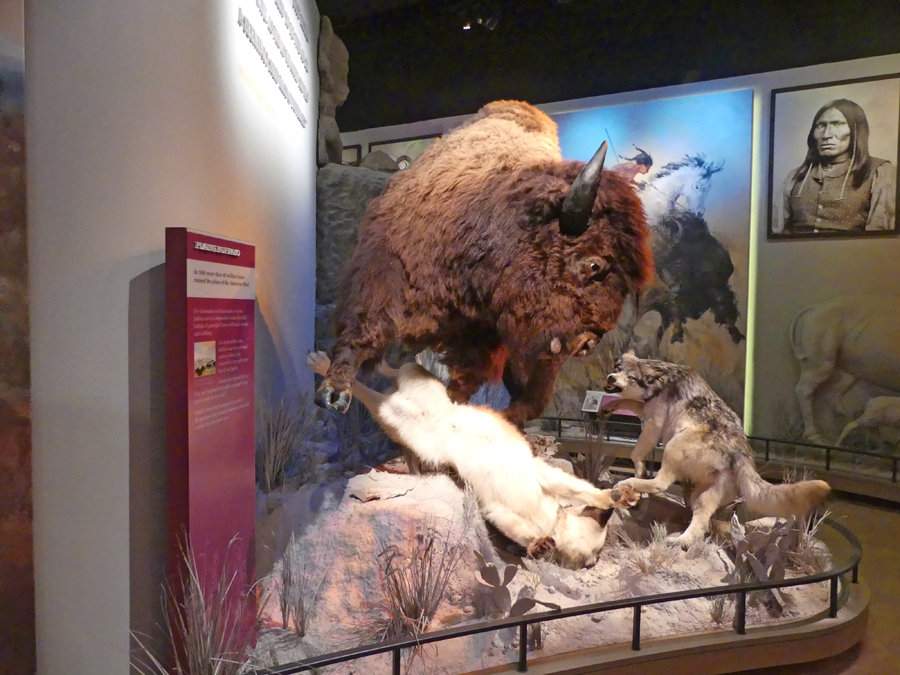 |
| Bison had to deal with other preditors besides man in Frontier Texas |
For some the land itself was a treasure
to be saved at any cost. Meet Satanta, a fierce Kiowa chief who
tried to preserving his people's way of life and stop the
encroachment of the "whites" in the
Comanche Empire Exhibit.
He looks you in the eye and tells you it was said of him "That I
killed more whites than any other Indian on the frontier." He
finishes his dialogue with the words, "I hope that was true."
 |
| Satanta recognized the threat whites posed to the Comanche people |
Another spirit guide, Comanche Chief Esihabitu
also known as Asa Harvey, tells you how he tried to protect his
people by keeping the peace. Cynthia Anne Parker is a spirit guide
who gives a different prospective on Commanche life. She was
captured and raised by the Commanche and was the mother of the last
great Comanche chief, Quanah Parker. She tells of the philosophy of
the Comanche. "They only killed the buffalo when they needed to for
food or shelter never sport."
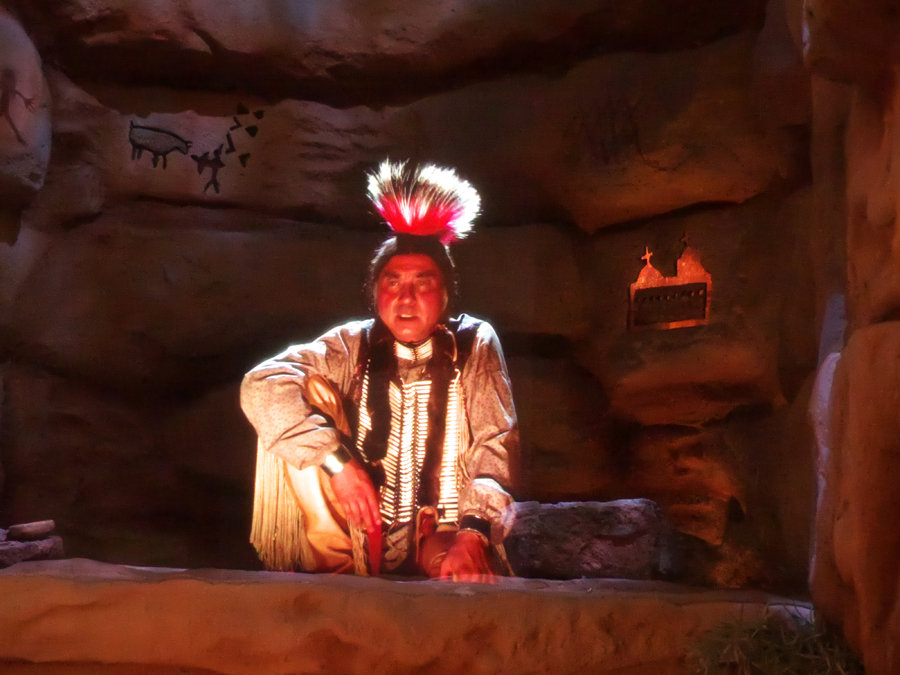 |
| Comanche Chief Esihabitu tried to befriend the whites |
She was eventually recaptured by the
soldiers and returned to live as a white. She never adjusted and
tried repeatedly to return to the Comanche.
 |
| Cynthia Ann Parker, one of the west's tragic stories |
But peace was not to be on the Texas
frontier. One treasure some sought there were the rich rewards of
buffalo hunting. The Buffalo Hide Trade room tells that
story. Spirit Guide J. Wright Mooar was one who saw a fortune to be
made in buffalo hunting. He tells of how he got into the buffalo
hunting business and of killing over 20,000 buffalo during his life.
The Guns of the West exhibit shows the rifles and handguns and their
development over the years of frontier settlement. Don't miss seeing
the Sharps "Big Fifty" that belonged to Mooar and is believed to
have killed more than 20,000 Texas buffalo.
 |
| J. Wrigth Mooar tells his story |
The next exhibit room, Military on the
Frontier, tells of the military presence in Texas. General
Randolph Barnes Marcy tells about their role. The buffalo in Texas
were protected for the Native Americans by treaty but the army chose
to close their eyes to the widespread hunting of the buffalo. The
Indians needed the buffalo and if the buffalo disappeared, it was a
way to banish the Indians to the reservations and open more land for
settlers. Barnes was one of the trailblazers who helped map the
West.
 |
| Mooar's Sharps "Big 50" |
As settlers poured into the frontier,
cattle ranching became a way of life. Spirit Guide George Thomas
Reynolds was one of the cowhands on the first cattle drive on the
Goodnight-Loving Trail. The Cowboys and Longhorns Exhibit is
filled with the artifacts of the cattle ranching business.
You'll meet Pat Garrett here too. He
worked as both a buffalo hunter and a cattleman on the Texas
frontier.
 |
| Pat Garrett tells you about his life on the frontier |
As the population grew settlement s
sprang up around the forts. Stagecoach companies such as Butterfield
Overland Stage began routes to these settlements. One of the
exhibits in Frontier Settlements shows the importance of the
stagecoach to development of towns.
One of the Spirit Guides Brit Johnson, a
black man who came to frontier Texas as a slave of Moses Johnson,
one of Stephen F. Austin's 300, tells of the friction the advancing
wave of whites caused with the Comanche.
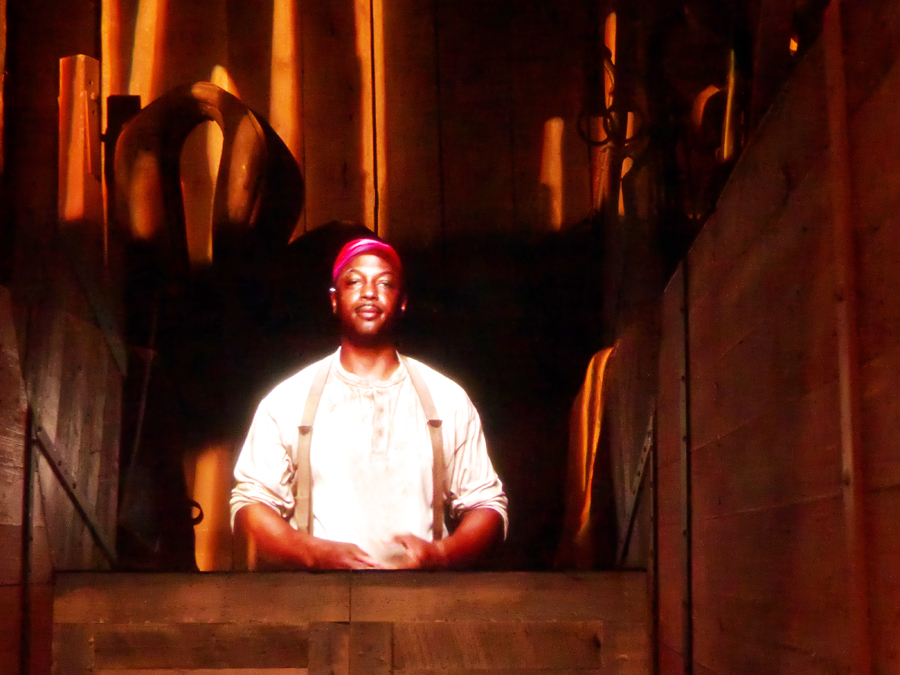 |
| Brit Johnson tells how he rescued his family and other settlers. |
Brit held the trusted position of ranch
foreman for Moses. On October 13, 1864, Brit had accompanied the
white ranchers into Weatherford for winter supplies. While the men
were gone, a band of Indians swooped down on the Elm Creek
settlement and killed some of the women and children and took many
others captive. Brit's wife and two daughters were among the
captured. With assistance from Moses, Brit went after his family and
the other captives. He eventually recovered his family
and every captive except Millie Durgan. He tells how he eventually
set up his own successful freight business.
Another Spirit Guide Elizabeth Carter
Clifton was one of those captured and later rescued. She tells her
tale of how hard life was on the Texas Frontier. She tells of losing
four husbands to "Indians or outlaws" and running a boarding house
on the frontier.
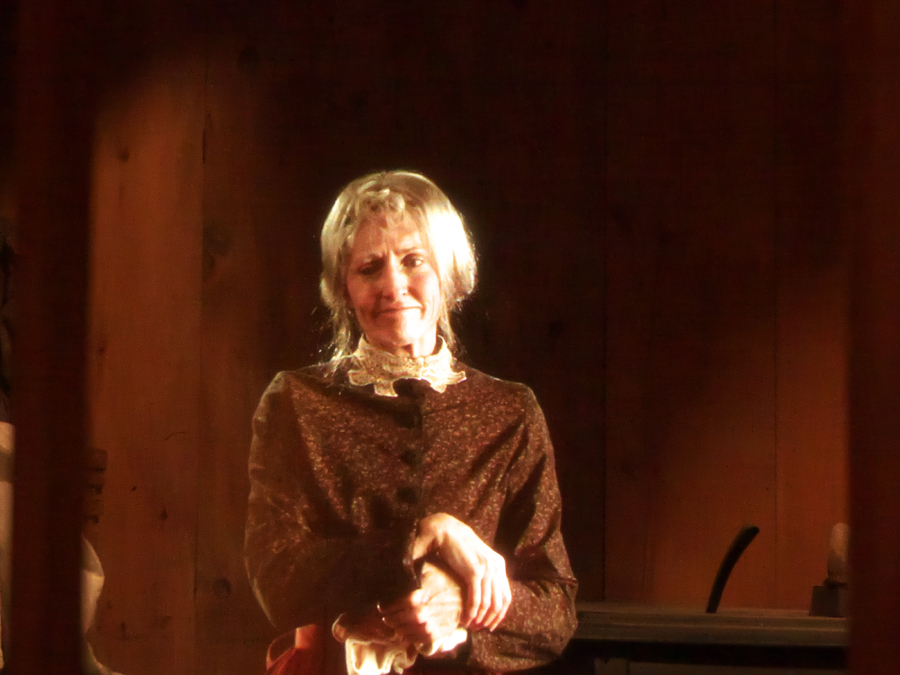 |
| Elizabeth Carter Clifton reminises |
Before you leave the museum, step
into the Theater in the
Round where you are given 360-degree view of life on the Texas
Frontier including being in the midst of a stampeding cattle herd,
facing a raging storm, and witnessing frontier battles occurring
before your eyes. It is quite a show.
The genuine artifacts, replicas of
life-sized wildlife, huge murals depicting frontier life and
artfully staged exhibits, but what make Frontier Texas a museum you
should not miss is the thrill of being able to hear conversations
from long ago with what appears to be a living legend from that era.
For more info:







